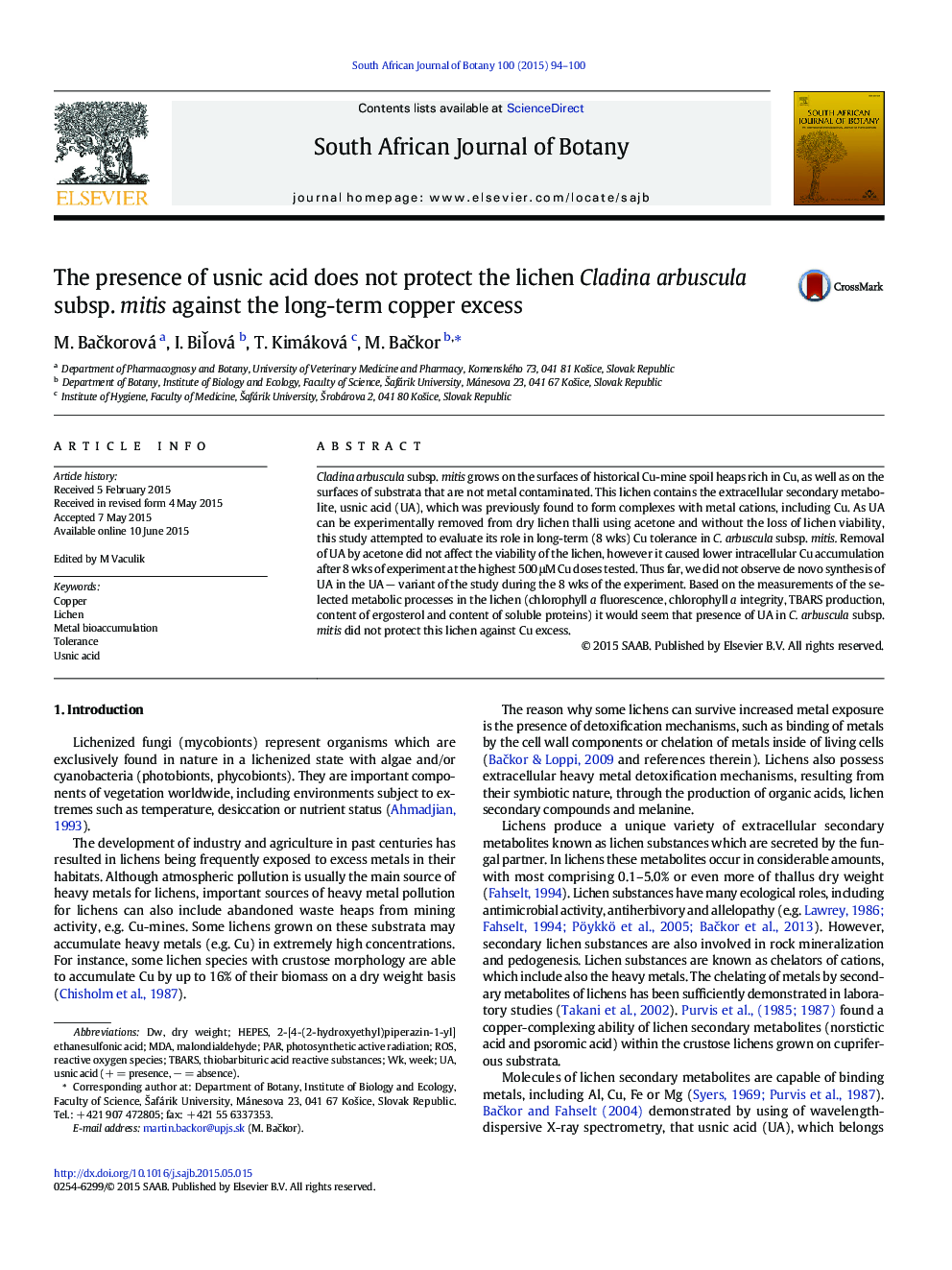| Article ID | Journal | Published Year | Pages | File Type |
|---|---|---|---|---|
| 4520377 | South African Journal of Botany | 2015 | 7 Pages |
•Cladina arbuscula grows on the surfaces of Cu-mine spoil heaps rich in Cu.•Removal of usnic acid did not affect the viability of the lichen.•Synthesis of usnic acid after 8 wks prolonged treatment by Cu was not observed.•Usnic acid did not protect selected metabolic processes against Cu excess.
Cladina arbuscula subsp. mitis grows on the surfaces of historical Cu-mine spoil heaps rich in Cu, as well as on the surfaces of substrata that are not metal contaminated. This lichen contains the extracellular secondary metabolite, usnic acid (UA), which was previously found to form complexes with metal cations, including Cu. As UA can be experimentally removed from dry lichen thalli using acetone and without the loss of lichen viability, this study attempted to evaluate its role in long-term (8 wks) Cu tolerance in C. arbuscula subsp. mitis. Removal of UA by acetone did not affect the viability of the lichen, however it caused lower intracellular Cu accumulation after 8 wks of experiment at the highest 500 μM Cu doses tested. Thus far, we did not observe de novo synthesis of UA in the UA − variant of the study during the 8 wks of the experiment. Based on the measurements of the selected metabolic processes in the lichen (chlorophyll a fluorescence, chlorophyll a integrity, TBARS production, content of ergosterol and content of soluble proteins) it would seem that presence of UA in C. arbuscula subsp. mitis did not protect this lichen against Cu excess.
